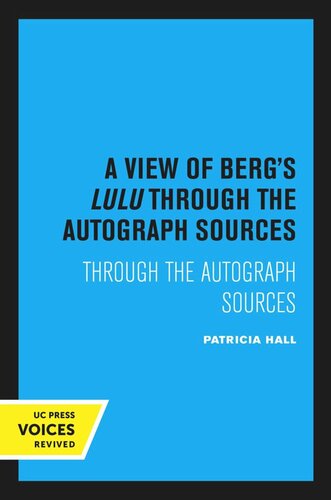

Most ebook files are in PDF format, so you can easily read them using various software such as Foxit Reader or directly on the Google Chrome browser.
Some ebook files are released by publishers in other formats such as .awz, .mobi, .epub, .fb2, etc. You may need to install specific software to read these formats on mobile/PC, such as Calibre.
Please read the tutorial at this link: https://ebookbell.com/faq
We offer FREE conversion to the popular formats you request; however, this may take some time. Therefore, right after payment, please email us, and we will try to provide the service as quickly as possible.
For some exceptional file formats or broken links (if any), please refrain from opening any disputes. Instead, email us first, and we will try to assist within a maximum of 6 hours.
EbookBell Team

5.0
100 reviewsAfter 50 years of analysis we are only beginning to understand the quality and complexity of Alban Berg's most important twelve-tone work, the opera Lulu. Patricia Hall's new book represents a primary contribution to that understanding—the first detailed analysis of the sketches for the opera as well as other related autograph material and previously inaccessible correspondence to Berg. In 1959, Berg's widow deposited the first of Berg's autograph manuscripts in the Austrian National Library. The complete collection of autographs for Lulu was made accessible to scholars in 1981, and a promising new phase in Lulu scholarship unfolded. Hall begins her study by examining the format and chronology of the sketches, and she demonstrates their unique potential to clarify aspects of Berg's compositional language. In each chapter Hall uses Berg's sketches to resolve a significant problem or controversy that has emerged in the study of Lulu. For example, Hall discusses the dramatic symbolism behind Berg's use of multiple roles and how these roles contribute to the large-scale structure of the opera. She also revises the commonly held view that Berg frequently invoked a free twelve-tone style. Hall's innovative work suggests important techniques for understanding not only the sketches and manuscripts of Berg but also those of other twentieth-century composers.